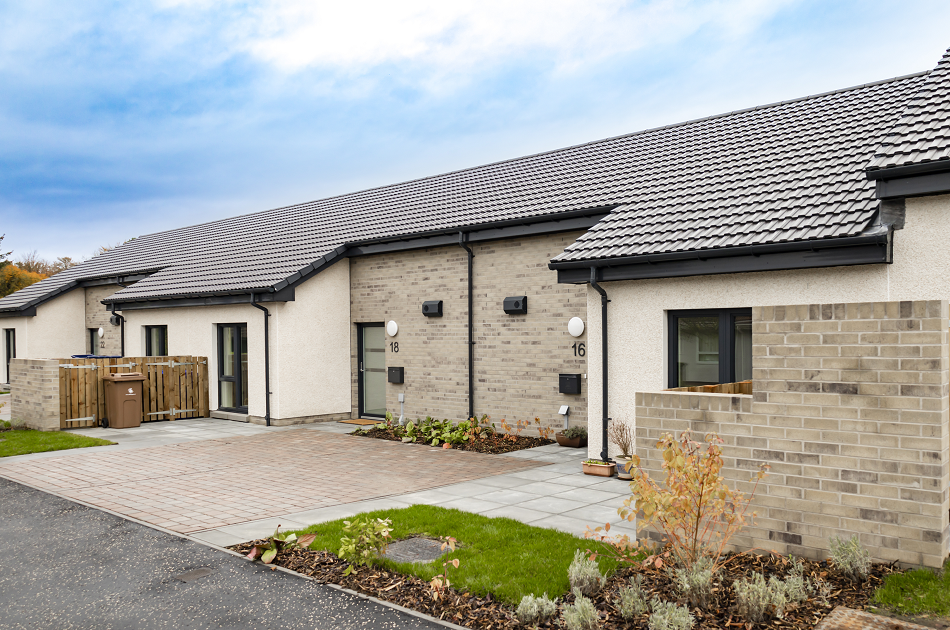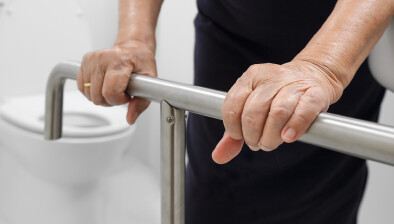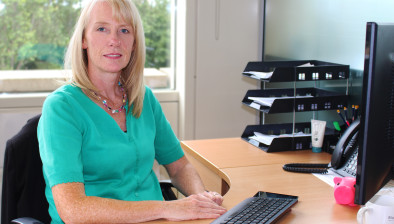Black’s Blog: From Dorran homes to passive houses

The new Hanover development in Drymen (Image: ECD Architects)
Do passive houses really need to cost more than “normal” ones? And can they still get damp? Jimmy Black explores some themes after a conversation with Angela Currie and Janice McDonald of Hanover Scotland.
Decisions, decisions. Take a popular housing scheme in a settled community in one of the loveliest parts of Scotland. Note that the houses are small, very expensive to heat and knackered (they were non-traditional Dorran houses). Think about the long distances involved in decanting or rehousing the tenants, who are elderly. Add on the problems with planning permission and the cost of new builds in rural areas.
Hanover Scotland was faced with this situation in Drymen, one of the most desirable places for millionaires to reside, which still hangs onto a resident population in social housing whose forebears have lived locally for many generations.
Another type of landlord might clear the site and sell it to private developers for a healthy profit. I don’t think that even occurred to Hanover Scotland, and I guess the Scottish Government might have been none too pleased with such an outcome.
Instead, Hanover gathered the technical information required to have a meaningful consultation with tenants and made the case for replacing the old Dorran homes with energy-efficient passive houses. Kieran Findlay and I explore the issues around this development in the latest episode of the Scottish Housing News Podcast, with guests Angela Currie (chief executive) and Janice McDonald (head of housing).
Kieran also took his microphone to Drymen and spoke to one of the tenants of the new development who is absolutely delighted with her passive house and the considerably reduced fuel bills. In her 70s, and having been made homeless from a private let, Mrs Nicholson was hugely grateful to the local council and to the housing association for enabling her to stay in her community.
Writing on the Non-Standard House construction website, Mark Chalmers describes how Dorran houses were built. They consisted of precast concrete structural panels, 16 inches wide, dampproofed with bituminous felt and insulated with half an inch of expanded polystyrene. Steel ties held them together … sadly, not stainless steel.
Four thousand of these were built in Scotland by 1967 for public and private buyers, and now owners are having to deal with rusting steel ties, dampness and condensation. But brand new passive houses can have condensation problems too, for entirely different reasons. Mark Chalmers recalls working on airtight zero energy houses which developed condensation issues when tenants tried to save money by switching off their continuous ventilation systems.
The same could happen in Hanover’s new passive houses. The tenant we spoke to is following instructions and leaving her air source heat pump and her ventilation system alone, but others are finding it less easy to adapt to a new way of heating and ventilating their homes. Angela and Janice told us they are working hard on finding the best ways to explain how passive houses work and how best to live in them.
The Drymen Passivhaus development won the Scottish Home Awards 2023 Affordable Housing Category to the great delight of Hanover Scotland, and architects ECD. Even better news is the cost of the development. At £186,000 each, these passive houses cost much the same as conventionally constructed new build homes. Maybe the Scottish Government’s aspiration that every house should be a passive house isn’t so daft after all.
On the podcast we discuss more than just the Drymen development, looking at the future of housing for older people and much else. Angela Currie also told us after the recording that she never misses the Scottish Housing News Podcast. So tune in, and find out why the CEO of one of Scotland’s leading housing associations is an avid listener!
The Scottish Housing News Podcast is co-hosted by Kieran Findlay and Jimmy Black. All episodes are available here as well as on the following platforms:










